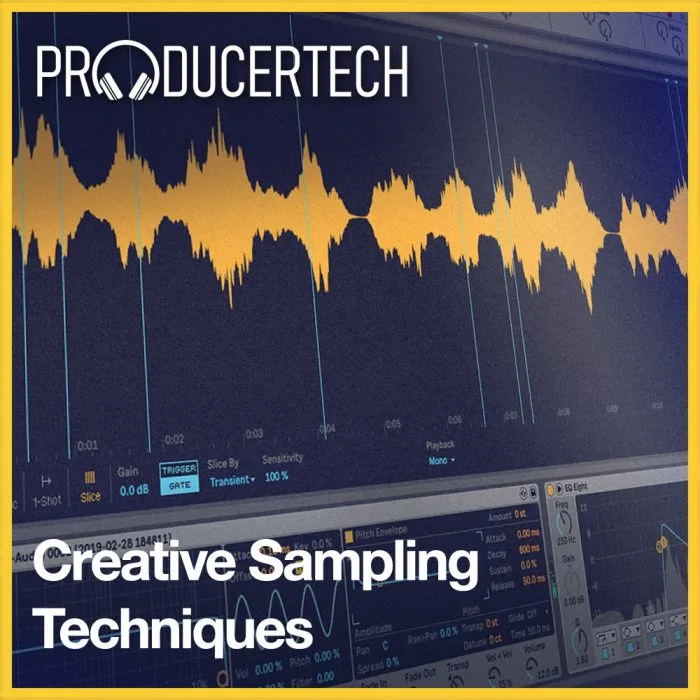Producertech has launched The Art of Sampling, a new video tutorial course that covers all of the core concepts of sampling.
Sampling is perhaps the most popular means of creating musical parts in modern production, inherent in a vast number of applications, from drum construction, to leads, to FX. This course covers all of the core concepts of sampling, using a range of DAW factory and 3rd party plugin instruments, providing students with a fundamental understanding of how to confidently work with whatever samplers they own.
Alongside lessons on many of the standard sampler parameters and behavioural aspects, including root note and transposition, start and end controls and looping, and the main types of envelope, there are numerous examples of how to apply techniques in the creation of unique and natural-sounding parts. Examples include pitch-shifted and modulated percussion, old school and current vocal presets, classic basses and velocity-modulated hats.
Once all areas of single-sampling have been covered, the lessons move on to multi-sampling, initially explaining the main considerations like keyboard mapping and velocity zones. Following this, there is a step-by-step guide to sampling a vintage accordion, teaching students how to convert any instrument in their studio into a multi-sampled patch.
Following on from The Art of Sampling course Creative Sampling Techniques sees certified trainer Rob Jones applying different sampling methodology in original ways to produce all of the musical parts in a Glitch Electronica track within Ableton Live.
Whilst the 2 courses work together well as a sequence, producers with sampling experience already may prefer to dive straight in with this set of tutorials, offering more advanced inspiration and tips to develop their workflow.
Starting proceedings with a kick and snare groove, powerful drums are constructed using various layering techniques, with unusual foley incorporated to add unique textures to an otherwise simplistic break. To this, Rob adds undulating bass, created from a single sample, shaped and modulated in differing ways to show how many possibilities can arise from a basic oneshot. Similarly, a vocal is taken in several directions, with one featuring tempo-locked stuttering whilst another employs more drastic time-stretching envelopes.
Multiple velocity-modulation assignments are then used to create a melodic groove from a complex orchestral sample, whilst other acoustic and synthesised samples are woven together to make pulsing pads and syncopated, arpeggiated leads. After switching to the arrangement area to start laying out parts, Rob introduces two additional samples, showing how to convert one to MIDI for stacking up other samples on top, and how to transform and resample another, for creating more experimental vocal phrases to sing along to the groove.
Both courses are currently on sale at a 25% introductory discount from Loopmasters and Plugin Boutique.
 Save big with Plugin Boutique's Drums, Percussion & Rhythm Month Sale!
Save big with Plugin Boutique's Drums, Percussion & Rhythm Month Sale!



so what’s the better deal. maschine + 6 free expansions… or just buy komplete? how many of these expansions come with komplete?
Komplete doesn’t include Maschine (software or hardware) or any Maschine expansions, so this is a whole different deal.
doesn’t komplete ultimate include maschine? actually i thought regular komplete, the newest one did, but at least ultimate… not very komplete if it doesn’t… haha